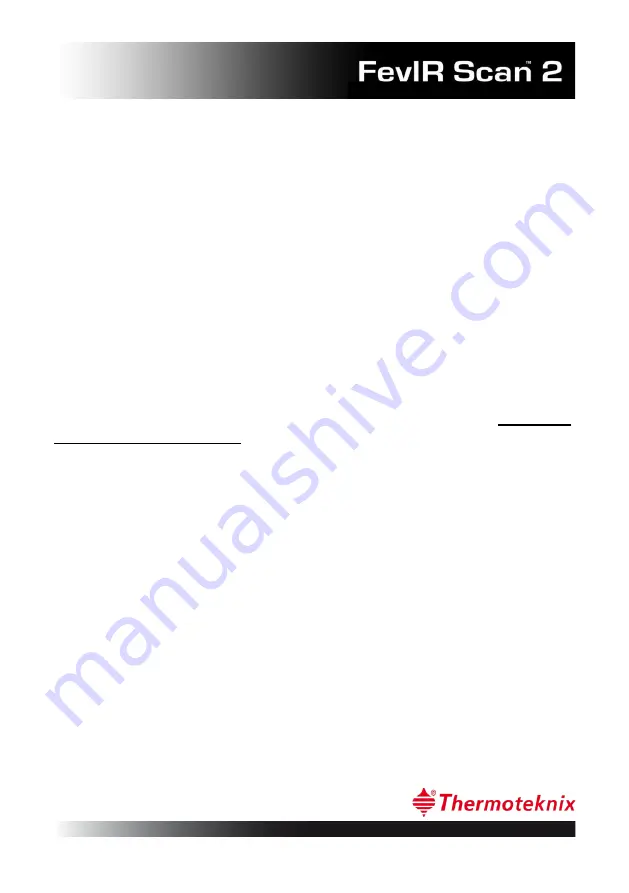
© Thermoteknix Systems Ltd 2020
37
8
Fault Finding
If the thermal image is uniform without any image texture or definition the
likelihood is that the scale setting is incorrect. If the image is uniformly black it may
be that the low span is set too high, i.e. all the measured temperatures are lower
than the low span setting. The reverse may be true if the image is white: the high
temperature may be set too low. If the image is all red, increase the Alarm threshold
temperature.
8.1
Temperature measurement
The FevIR Cam must be directed to view the oncoming subjects while keeping the
Calibration Reference Source in view. The image can be displayed full screen by
pressing F11. FevIR Cam measures skin surface temperature. The eye inner orbit
(socket) has the greatest correlation with core temperature closely followed by
forehead temperature. The forehead temperature however is more likely to be
affected by other non-fever related effects, such as stress, sweating, exercise, raised
ambient temperature, and many other environmental and physiological conditions.
Glass and plastic are opaque in the infrared wavelength so thermal imaging cannot
“see” through them. All people approaching the
Scanning location must
be asked to
remove their glasses and hats
prior to entering the monitoring area. This will allow
measurement of their inner eye orbital temperature and provide accurate
measurements.
Typical normal core temperatures measured orally are 36.8°C (although please see
later the discussion on body temperature variation.)
For convenience, otic (ear cavity) temperature is often cited as the core
temperature as this is readily measured in the ear using a specialised, easily
obtainable ear thermometer.
Otic temperatures can be quickly and hygienically measured: 37.6°C is the mean
normal otic measurement. The corresponding eye orbit temperature is 36°C but,
please note, there is a range of temperatures considered normal in disease-free
people.
















































